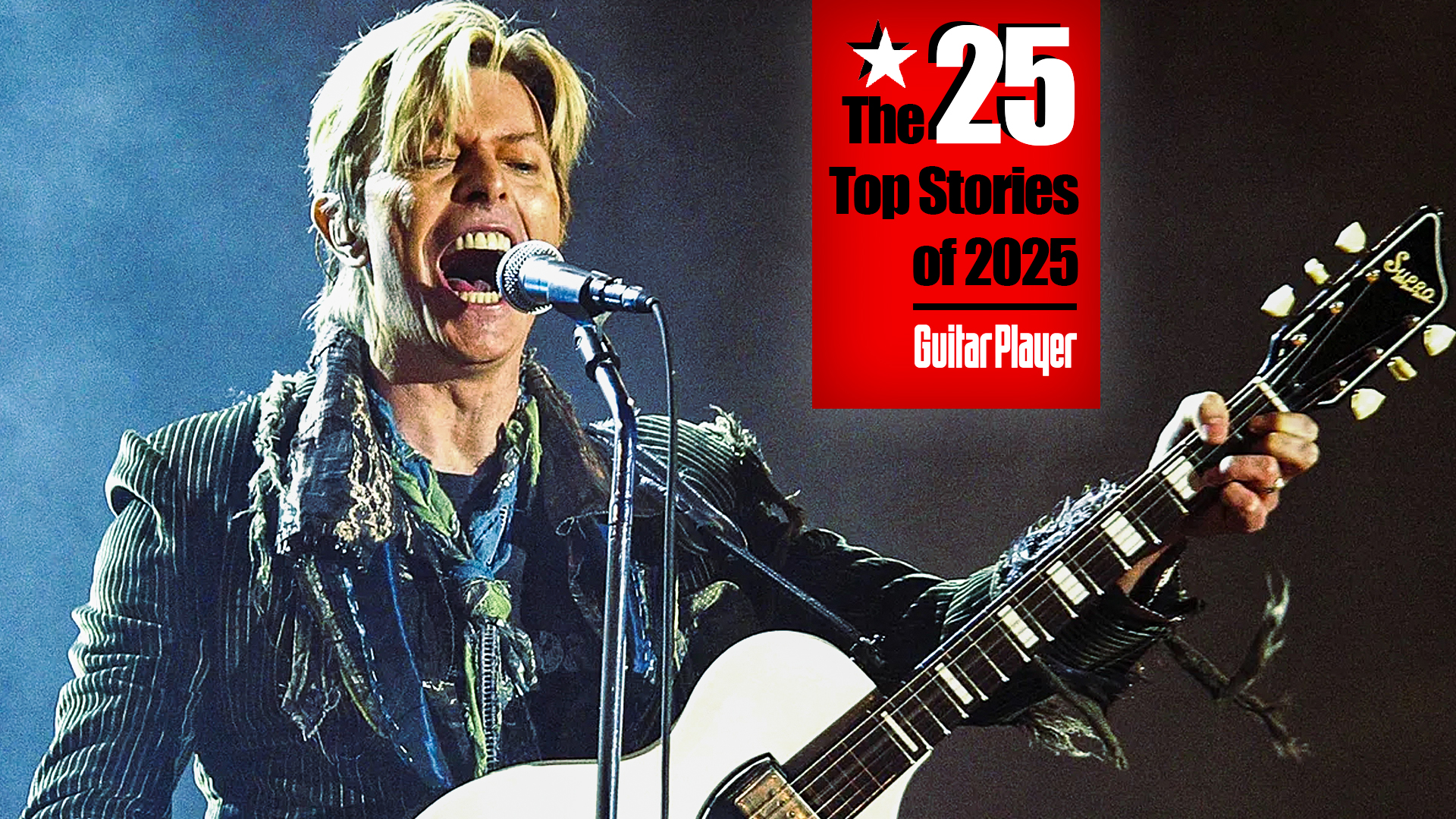“Cold plunging is challenging to do. This record is like we’re diving in together and putting it down on tape while it’s fresh”: Cold water therapy inspired Sam Evian’s new album – which has so many guest guitarists, he wound up playing bass
The vintage instruments and recording gear in his upstate New York studio let the singer-songwriter follow his muse where it leads. On Plunge, it swims in a wash of warm, overdriven guitars, with guests including Adrianne Lenker and El Kempner
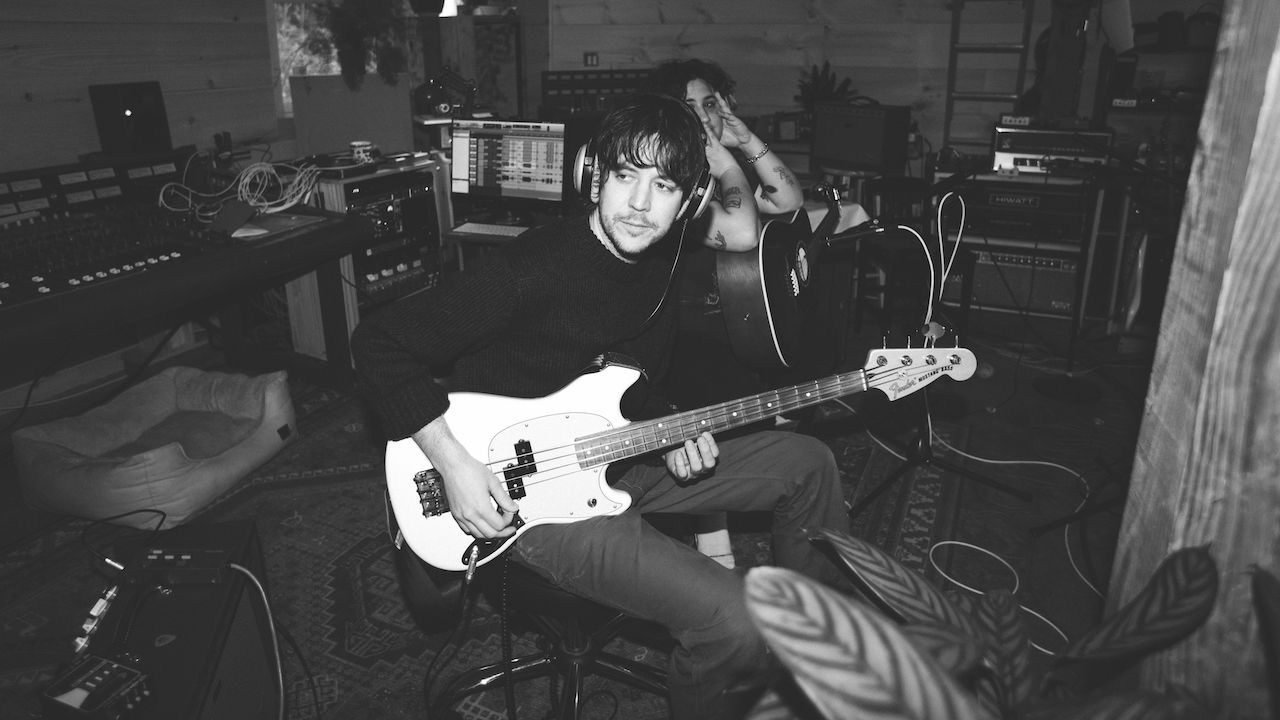
The creek that wraps around Sam Evian’s analog recording studio/abode in New York’s Catskills may rise only to his chest, but its influence on the singer/songwriter-guitarist’s new power-pop album is immeasurably deep. The evidence is right there in the record’s title: Plunge (Flying Cloud/Thirty Tigers).
“Last year, I was looking for a way to get through the winter blues, to kind of stimulate myself into making healthy decisions, and I learned about cold plunging,” Evian explains.
Cold-water immersion has long been touted as offering health benefits for mind and body. The stream running through his parcel offered Evian a ready source. “There are a lot of chemical reasons and benefits as to why it works and why it’s good for you,” he says. “It’s super-cold, and it’s challenging to do it.”
The fortitude required to take those chilling dunks went hand in hand with Evian’s efforts to compose the cuts on Plunge, his fourth solo album. He found the practice helped to get him out of his comfort zone, stop self-medicating and focus on the music.
That continued into the recording process, which he did with a selection of unusual guitars – including a 1962 Epiphone Sorrento – and a far-flung group of friends with whom he tracked his songs live, with minimal takes.
“This record is a plunge,” he explains. “It’s like we’re diving in together, this group of people in a room, and putting it down on tape while it’s fresh. So, yeah, it felt like the appropriate title: no headphones, no click track, live bleed in the room, early takes.”
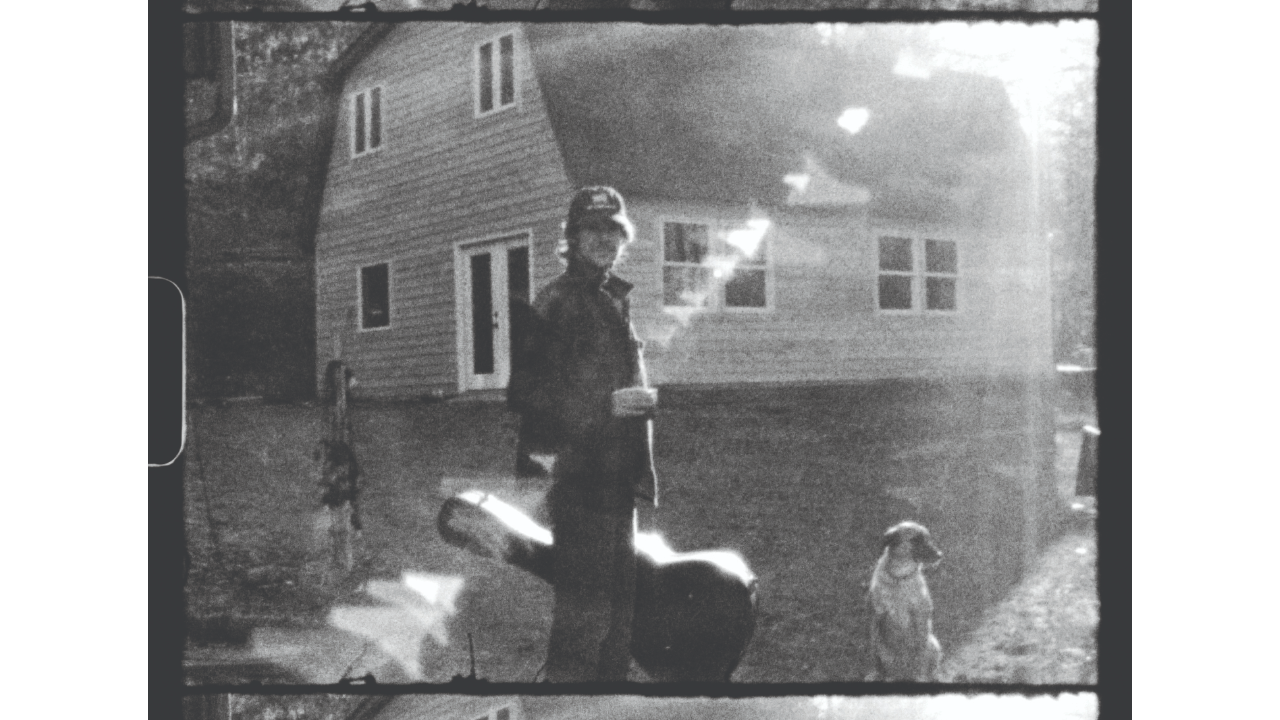
While it may not deliver a shock to the senses like a cold-water immersion, Plunge has a disorienting effect. Its warm, amber-hued tones make you wonder if you’ve stumbled upon some lost gem from the early 1970s.
All the latest guitar news, interviews, lessons, reviews, deals and more, direct to your inbox!
The low-fidelity production recalls the raw recordings of Paul McCartney’s solo debut album, Pete Townshend’s remarkable Scoop home demos, and, especially, Emitt Rhodes’ wistfully sunny 1970 self-titled one-man masterwork.
It felt like the appropriate title: no headphones, no click track, live bleed in the room, early takes
The nine cuts are almost all pushed along by crunchy overdriven riffs and melodic guitar hooks that worm in your ear long after the record finishes.
Wild Days, the lead track and single, features a circular chord progression pinned down by a percolating pedal tone, while Rollin’ In floats on a smooth bed of California soft rock. Thick saturated drive seems to be Evian’s stock-in-trade, and nowhere is it more evident than on the infectious Why Does It Take So Long, where it extends from the song’s insistent rhythm guitar riff to the fuzzed-out electric piano and guitar solos.
Throughout the tuneful collection, Evian maintains a laidback vibe with a steady flow of hazy, dreamy tunes that might have drifted out of an AM radio some 50 years ago,
As it happens, he’s as savvy behind the board as he is the guitar. Evian got his career on track in Brooklyn, both as a musician (with the jazz-pop indie-rock trio Celestial Shore, where he performed under his birth name, Sam Owens) and as an engineer/producer at Figure 8 Recording, the Prospect Heights facility launched by multi-instrumentalist Shahzad Ismaily.
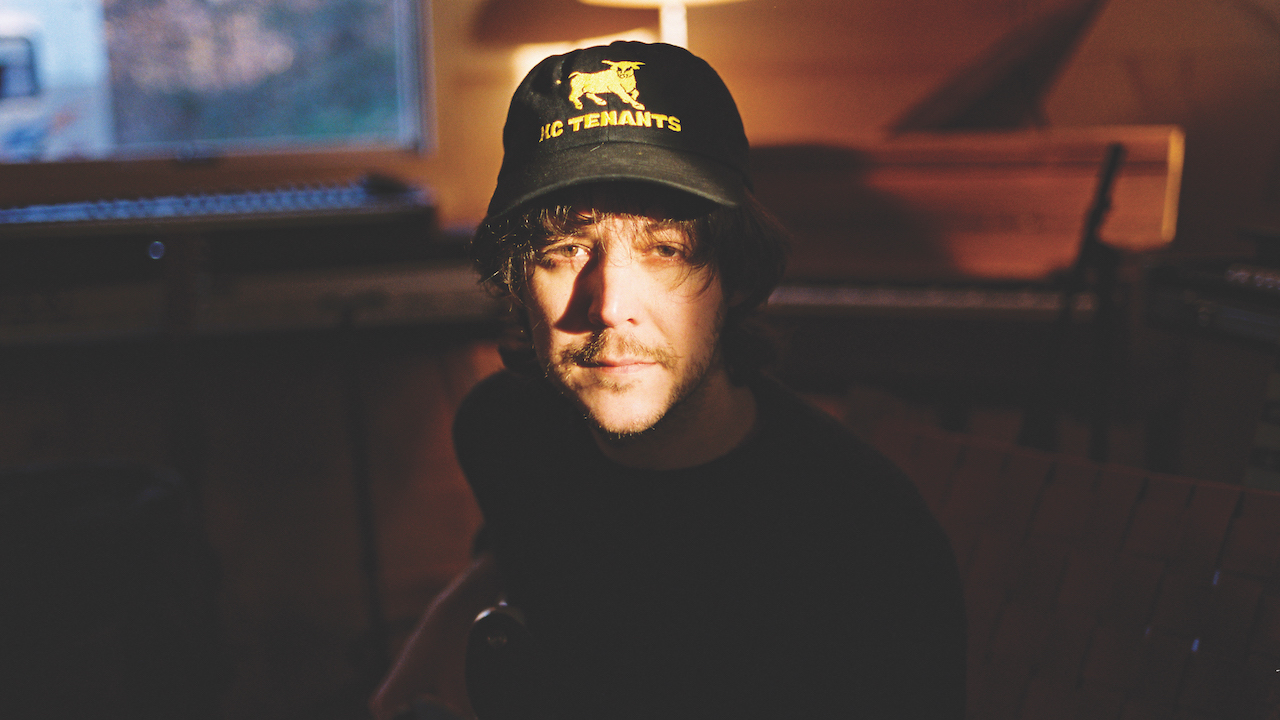
“I had a great community there, but it was a commercial studio and needed to have new clients every day and pay the rent,” Evian says. “Shahzad would call you at, like, two in the morning and say, ‘Hey, I have [free-jazz pioneer] Milford Graves coming in at six in the morning. Can you be here to record us?’”
Seeking more space and privacy for his music making, Evian moved to the Catskills in 2018, a good two years before the COVID pandemic sent New York City dwellers fleeing to those northern environs and made local real estate prices soar. “I got really lucky,” Evian says, smiling. “I’ve never been so ahead of the curve in my life.”
But the setting also suited him. “I’m a country person,” he explains. “And I couldn’t afford to do this in the city.”
Now, when an idea comes to him, Evian can instantly get to work on it in his studio and bring in a troupe of fellow musicians to assist.
“It’s super-productive,” he affirms. “You have an idea and then, all of a sudden, it’s a reality. I have people here working pretty much all the time, so when I’m not working on my own stuff, I have other artists here, recording. It’s been a busy couple of years.”
As you'll notice from the above video for Wild Days, Evian’s studio is filled with vintage instruments and recording gear. Among the treasures is his Tascam 48 eight-track reel-to-reel deck, used for many of his previous recordings as well as Plunge.
Before the sessions were completed, he managed to restore his MCI 16-track two-inch deck. “I wanted to use it so badly that, once I had the eight tracks down,” he reveals, “I bumped those over to the 16-track and finished doing my vocals and overdubs that way.”
The studio, the console, the tape machine and the guitar – they’re all like the same instrument
For someone with so much experience in the digital recording realm, Evian finds analog tape satisfying in ways that go beyond retrogressive vintage-gear fandom. “I really love working on analog machines – eight- or 16-track – because it forces you to make decisions early,” he says. “It’s not necessarily a retro throwback; it’s just a good way to make music, I think.”
Evian’s old-tech leanings don’t apply as fully to guitar. On the one hand, there’s his 1962 three-quarter-scale Epiphone Sorrento. “My dad was working at a guitar store in the early ’90s and this guy came in and sold it to him for cheap,” he explains. “My dad gave it to me because it was the perfect size. It has one P-90 and it’s amazing. And it’s got this early ’60s Epiphone neck. I’ve never seen anything like it.”

But on Plunge, Evian also plays a Strat-style guitar based on a Cooder-caster that he and his friends built from Warmoth parts. “I actually had them put a Gibson-scale neck on a Strat-shaped body,” Evian explains. “It’s got a deep V, and I love that neck.” Evian and his pals routed the pickups for Lollar gold-foil pickups. “They’re hot and really full bodied,” he says “It’s just a really good slide guitar.”
For effects, he plugged into an Origin Effects Cali76 compressor, a Wampler Tumnus and a Chase Bliss Warped Vinyl. “That pedal has a tonal imprint, even without the modulation effect,” he says. “There’s a tone-shaping knob that’s either high-pass or low-pass. You can find a sweet spot where it takes out a little of the mud.” It all ends up coming out of his Magnatone Twilighter, tracked with a Beyerdynamic M 160 ribbon mic and a Neve preamp.
In addition to guitar, Evian plays saxophone (his first instrument), some keyboards and bass on many tracks. The bass became his instrument of choice in part because he has many talented guitar friends who joined him on the recordings. They include Palehound singer/guitarist El Kempner, Chicago multi-instrumentalist Liam Kazar (whose credits include the Jeff and Spencer Tweedy outfit, Tweedy) and Big Thief singer/guitarist Adrianne Lenker.
But playing bass also suited Evian’s role as producer and arranger. “I find myself in the bass chair a lot in the studio because it’s kind of like the producer’s instrument,” he explains. “You can guide feel and tempo, and the melodies that you choose to play on the bass form the feel of the song a lot of times. So I really have been favoring it.”
As a solo artist devoted to his studio space, Evian nods to the influence of predecessors like McCartney and, especially, Rhodes. “And then in the modern space, I’m such a fan of [solo and former Deerhoof guitarist] Chris Cohen, and I know he’s always done his own studio work,” he says. “And I like Tame Impala — Kevin [Parker] records himself. There’s a great tradition of home recordists who built out their studio and are making records that way.”
As Evian explains, it was home recording that spurred his interest in songwriting to begin with. “Because my first instrument was saxophone, I was more an instrumentalist and was really interested in arranging. That’s why multitrack appealed to me – as a way to work out arrangements.
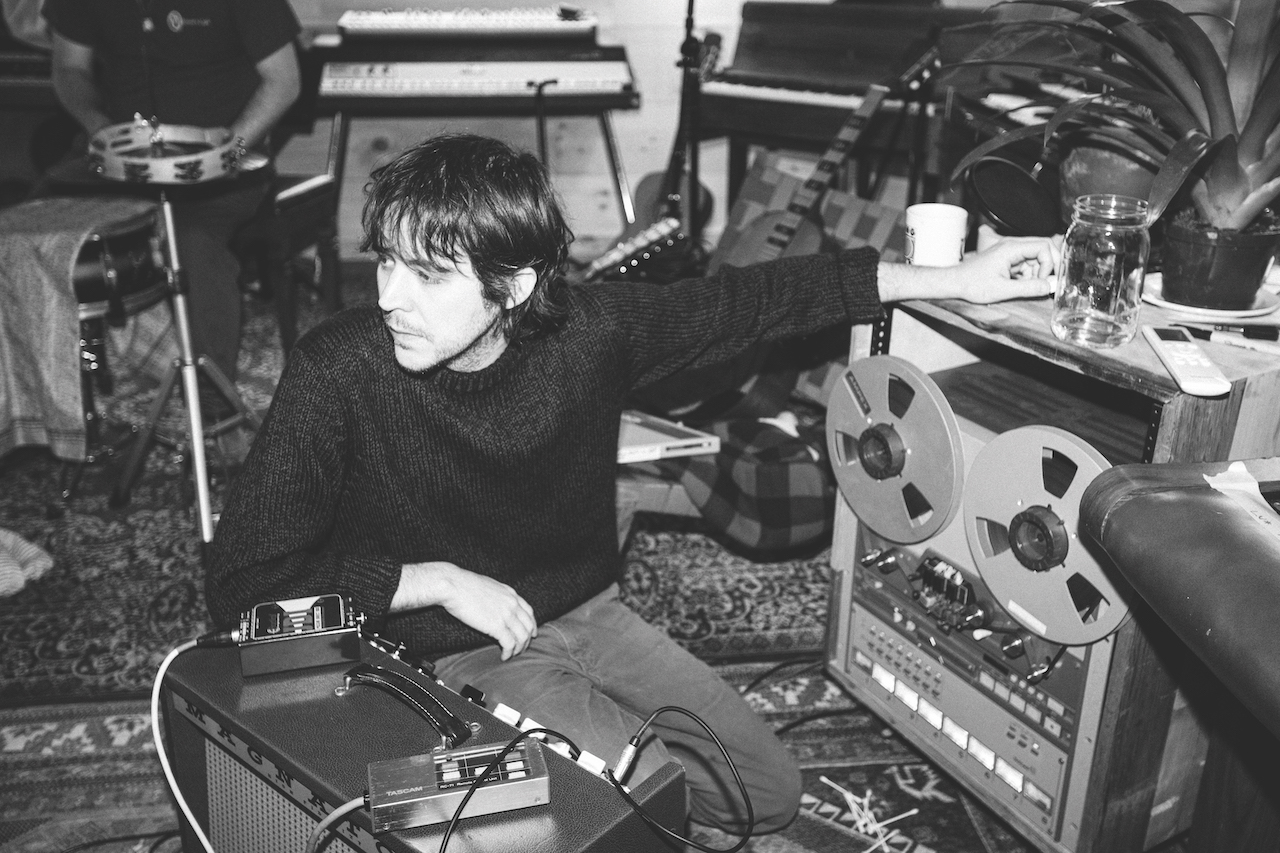
“And I guess it really goes back to my dad,” he continues. “He’s a jazz guitarist and he got into fusion in the ’70s and into MIDI and Pat Metheny with the Roland [GR-300] guitar. He was an early adopter, so when I was growing up, there was always MIDI gear around. He got an early version of Logic and had a MIDI interface for it. So he would let me mess around and make my little MIDI arrangements.
“And it just kind of developed throughout my life. When I was living in New York, I thought, Maybe I could do this as a job. And I built it into a career.”
Whether he’s producing artists like Cass McCombs, folk musician Molly Sarlé or indie-rocker Anna Burch in his studio, Evian’s intention is to satisfy his clients’ sonic desires.
“The person that I am when I’m working on other people’s music is a lot different than the person I am when I’m working on my own,” Evian explains. “The recording business, it’s about hospitality. I’m running a retreat hotel for musicians and totally catering to them and their comforts. And I love doing that, but it’s like it’s a tailored version of myself.
“And so, on Plunge. I got to be the manic hurricane person who has ideas and needs to put them down.”
To that end, Evian took a cue from a tried-and-true source of inspiration: the Beatles, specifically, Peter Jackson’s 2021 documentary, Get Back. “In the film, when the group gets to Apple [Studios] and Billy Preston shows up, [producer] Glyn Johns really comes into his own finding the sounds, and it just glues everything together. And the Beatles start pulling magic out of the ether.
“And I noticed that there were no headphones; they were singing live through a PA in the room, with no isolation between the instruments. I found that really inspiring, and it was a reaffirmation for me that that’s how I want to structure sessions at my studio.
“I’m really allergic to a modern recording studio, where there’s a lot of glass and isolation. That’s not to say you can’t make good music in that environment, because obviously you very much can. But I do find a special corner of creativity when the space is open, like it was in the Get Back sessions.”
His studio’s unobstructed layout certainly had an impact on Plunge’s songs, some of which changed shape in the hands of other musicians. Evian’s demos – “I always make a demo of a song once I get it down” – provided the musicians with a basic template for the songs. “But on this record, I really wanted to let the songs go where the musicians would take them,” he says.
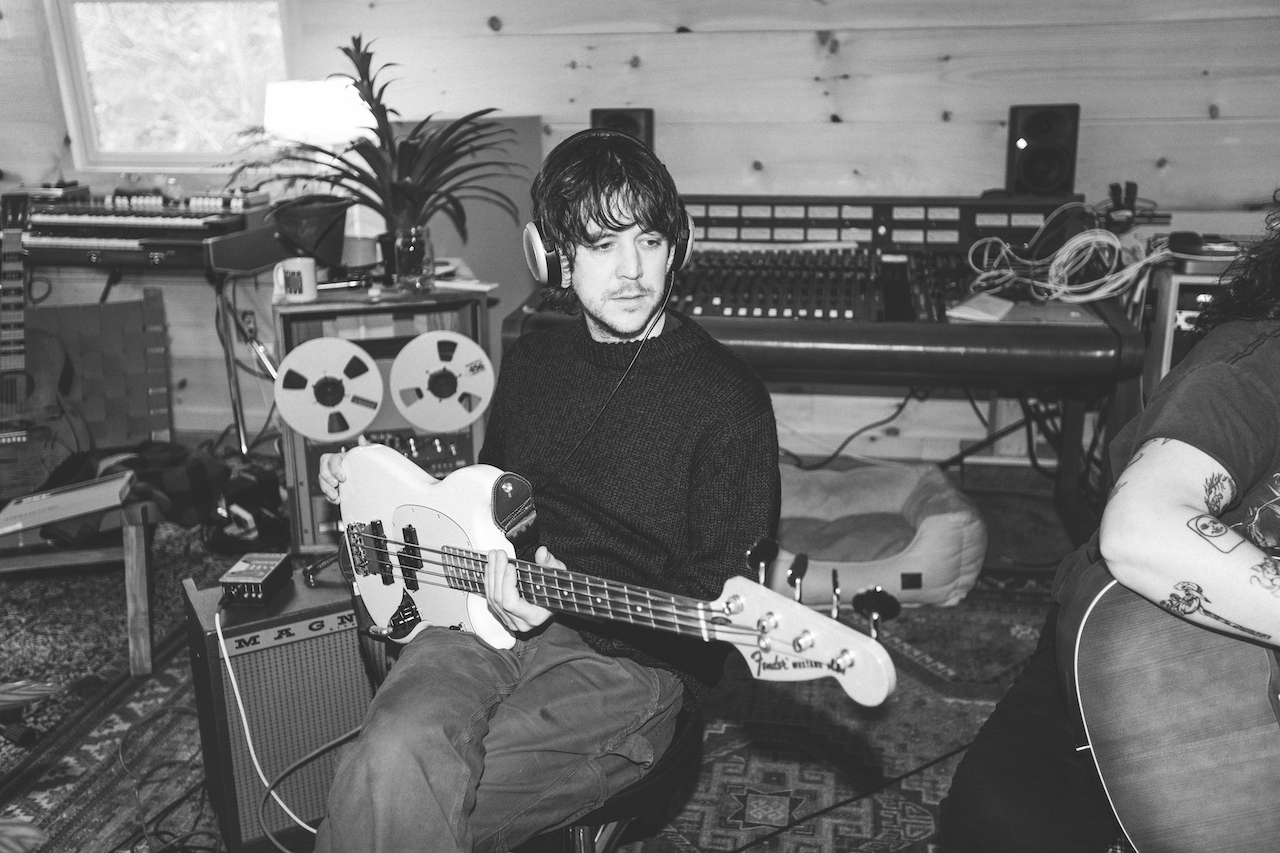
The result is an album that sounds warm, welcoming and immersive, punctuated by moments of inspired guitar work and sonic delight. Plunge shows what happens when musical talent is given the space and means to work freely with the technology of choice. As Evian explains, the boundaries between them blur, resulting in bracing sensory experiences not unlike the jolt of a cold-river plunge.
“You know, my toolbox in the studio is pretty well burned in at this point, so I don’t really have to think too deeply about technical decisions,” he reveals. “I can just flow. And when I hit the flow state in the studio, the console, the tape machine and the guitar – they’re all like the same instrument. It doesn’t happen that way all the time, but when it does, it’s really special. And I can kind of just go with it.”
Christopher Scapelliti is editor-in-chief of GuitarPlayer.com and the former editor of Guitar Player, the world’s longest-running guitar magazine, founded in 1967. In his extensive career, he has authored in-depth interviews with such guitarists as Pete Townshend, Slash, Billy Corgan, Jack White, Elvis Costello and Todd Rundgren, and audio professionals including Beatles engineers Geoff Emerick and Ken Scott. He is the co-author of Guitar Aficionado: The Collections: The Most Famous, Rare, and Valuable Guitars in the World, a founding editor of Guitar Aficionado magazine, and a former editor with Guitar World, Guitar for the Practicing Musician and Maximum Guitar. Apart from guitars, he maintains a collection of more than 30 vintage analog synthesizers.


